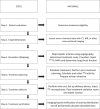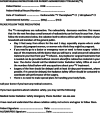AAPM Medical Physics Practice Guideline 14.a: Yttrium-90 microsphere radioembolization
- PMID: 37820316
- PMCID: PMC10860558
- DOI: 10.1002/acm2.14157
AAPM Medical Physics Practice Guideline 14.a: Yttrium-90 microsphere radioembolization
Abstract
Radioembolization using Yttrium-90 (90 Y) microspheres is widely used to treat primary and metastatic liver tumors. The present work provides minimum practice guidelines for establishing and supporting such a program. Medical physicists play a key role in patient and staff safety during these procedures. Products currently available are identified and their properties and suppliers summarized. Appropriateness for use is the domain of the treating physician. Patient work up starts with pre-treatment imaging. First, a mapping study using Technetium-99m (Tc-99m ) is carried out to quantify the lung shunt fraction (LSF) and to characterize the vascular supply of the liver. An MRI, CT, or a PET-CT scan is used to obtain information on the tumor burden. The tumor volume, LSF, tumor histology, and other pertinent patient characteristics are used to decide the type and quantity of 90 Y to be ordered. On the day of treatment, the appropriate dose is assayed using a dose calibrator with a calibration traceable to a national standard. In the treatment suite, the care team led by an interventional radiologist delivers the dose using real-time image guidance. The treatment suite is posted as a radioactive area during the procedure and staff wear radiation dosimeters. The treatment room, patient, and staff are surveyed post-procedure. The dose delivered to the patient is determined from the ratio of pre-treatment and residual waste exposure rate measurements. Establishing such a treatment modality is a major undertaking requiring an institutional radioactive materials license amendment complying with appropriate federal and state radiation regulations and appropriate staff training commensurate with their respective role and function in the planning and delivery of the procedure. Training, documentation, and areas for potential failure modes are identified and guidance is provided to ameliorate them.
Keywords: MPPG; Yttrium-90; brachytherapy; hepatic tumors; practice guideline; radioembolization.
© 2023 The Authors. Journal of Applied Clinical Medical Physics published by Wiley Periodicals LLC on behalf of American Association of Physicists in Medicine.
Conflict of interest statement
Members of TG356 listed below attest that they have no potential Conflicts of Interest related to the subject matter or materials presented in this document: Muthana Al‐Ghazi, Ahmet Ayan, Nathan Busse, Erli Chen, Shirin Enger, Stephen Graves, Robert Hobbs, Mary Ellen Jafari, Peter Kim, Nichole Maughan, Andrew Polemi, Jennifer Stickel.
Members of TG356 listed below disclose the following potential Conflict(s) of Interest related to subject matter or materials presented in this document: Nadine Abi‐Jaoudeh and Diane Alvarez received research funding from Sirtex Medical. Michael Chuong served as a speaker for Sirtex Medical. William A. Dezarn served as a consultant to Sirtex Medical.
Figures
Similar articles
-
Feasibility of imaging 90 Y microspheres at diagnostic activity levels for hepatic radioembolization treatment planning.Med Phys. 2020 Mar;47(3):1105-1114. doi: 10.1002/mp.13974. Epub 2020 Jan 20. Med Phys. 2020. PMID: 31855282 Free PMC article.
-
Outpatient single-session yttrium-90 glass microsphere radioembolization.J Vasc Interv Radiol. 2014 Feb;25(2):266-70. doi: 10.1016/j.jvir.2013.11.005. Epub 2013 Dec 12. J Vasc Interv Radiol. 2014. PMID: 24332243
-
Clinical and Dosimetric Implications of Calculating Lung Shunt Fraction for Hepatic 90Y Radioembolization Using SPECT/CT Versus Planar Scintigraphy.AJR Am J Roentgenol. 2022 Apr;218(4):728-737. doi: 10.2214/AJR.21.26663. Epub 2021 Oct 27. AJR Am J Roentgenol. 2022. PMID: 34704460
-
(90)Y Radioembolization: Multimodality Imaging Pattern Approach with Angiographic Correlation for Optimized Target Therapy Delivery.Radiographics. 2015 Sep-Oct;35(5):1602-18. doi: 10.1148/rg.2015140314. Epub 2015 Jul 31. Radiographics. 2015. PMID: 26230755 Review.
-
Radioembolization for the treatment of liver tumors general principles.Am J Clin Oncol. 2012 Feb;35(1):91-9. doi: 10.1097/coc.0b013e3181f47583. Am J Clin Oncol. 2012. PMID: 22363944 Review.
Cited by
-
New frontiers in radioembolization.Ther Adv Med Oncol. 2024 Sep 30;16:17588359241280692. doi: 10.1177/17588359241280692. eCollection 2024. Ther Adv Med Oncol. 2024. PMID: 39371617 Free PMC article. Review.
-
Measure of 90Y-glass microspheres residue post-TARE using PET/CT and potential impact on tumor absorbed dose in comparison 99mTc-MAA SPECT/CT dosimetry.EJNMMI Rep. 2024 Aug 26;8(1):26. doi: 10.1186/s41824-024-00214-8. EJNMMI Rep. 2024. PMID: 39183235 Free PMC article.
References
-
- Dezarn WA, Cessna JT, DeWerd LA, et al. Recommendations of the American association of physicists in medicine on dosimetry, imaging, and quality assurance procedures for 90 Y microsphere brachytherapy in the treatment of hepatic malignancies: aAPM recommendations 90 Y microsphere brachytherapy. Med Phys. 2011;38(8):4824‐4845. doi:10.1118/1.3608909 - DOI - PubMed




